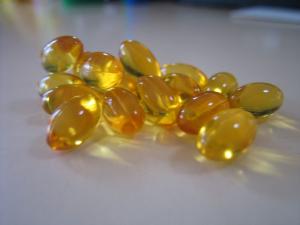The technology specifies a novel device which allows to stabilize images of optical microscopes with high resolutions against externally induced oscillations and drift effects. In particular for optical microscopes, which achieve a higher resolution, it is important to ensure a high mechanical stability of the structure of microscope for a good image quality. It improves the performance of instruments such as laser scanners, fluorescence microscopes, Raman systems, STED- or localization-microscopes.
The site-directed modification of e.g. biomolecules is often time consuming and laborious. This invention provides a high yielding and highly specific method to link nearly any molecule to nearly any other molecule. The “Click reaction” used is the well known Diels-Alder reaction with inverse electron demand. In this fast reaction an appropriate, easily functionalized dien (e.g. Tetrazin) is reacted with an appropriate functionalized dienophil (e.g. Olefin) to yield the conjugate. The release of nitrogen makes the reaction irreversible. No side reactions occur. Further the Intellectual Property covers specific information regarding the ligation of a diagnostic marker AND a therapeutic agent AND a biomolecule. Convincing synthetic data are available for the ligation of peptide with peptide, peptide with marker molecule, peptide with therapeutic agent, peptide with oligo nucleotide, dendritic structure and specific surface modification by means of this technology.
Optical fluorescence and gamma-labeled radio-pharmaceutical imaging offer complementary ways of probing and assessing the physiology of small animals. With the increasing use of both methods for functional molecular imaging in small animal models for applications such as cancer research and drug development, it has become more important to integrate their results, particularly for studies of the same animal. This can be performed through image registration of separate studies or through simultaneous tomographic acquisition with implicit registration of the two imaging modalities. DKFZ developed an optical imaging detector for fluorescence and bioluminescence in small animal imaging, which is compatible for single-photon emission computed tomography (SPECT).
New method for producing a highly diverse antibody library, where pro-teins/antibodies can be selected for specific applications. A large and, compared from cell to cell, highly uniform number of antibodies is covalently attached to the surface of a eukaryotic cell. Using this technology, specific antibodies can be selected together with the presenting cell out of a high number of cells in a comparatively easy way. The technology can also be used humanizing a hybridoma cell line by enabling the homologous recombination of the constant do-mains of human immunoglobulins with the respective gene.
The present technology provides 3'-photolabile nucleoside derivatives for producing nucleotides. The resulting oligonucleotides built up on the support by light-controlled synthesis are linked to the solid phase via the 5' end and thus can be used for investigating reactions that require free 3'-OH ends, for example certain DNA-enzyme interactions.

Microalgae are photosynthetic microorganisms that produce high value compounds considered essential for human health, including polyunsatured fatty acids…